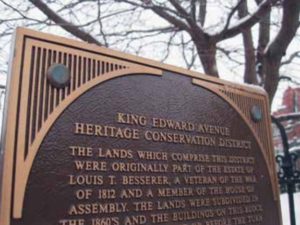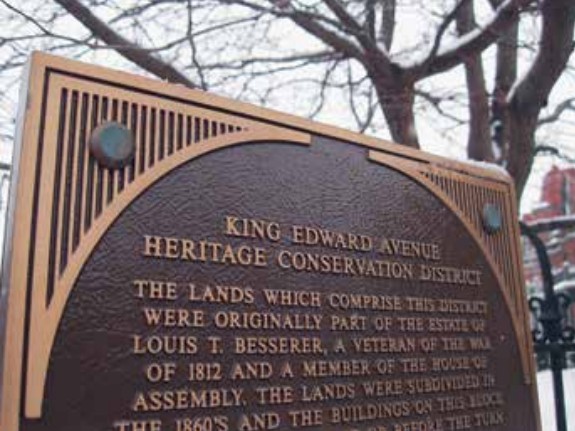The birth of Action Sandy Hill
François Bregha
Over the last few months, COVID-19 has turned our world upside down and closed down restaurants, theatres, arenas, festivals, stores and so much more, but not Action Sandy Hill (ASH). Indeed, while we have all been practicing self-isolation, ASH has responded to the City’s new zoning proposals for inner city neighbourhoods, coordinated reviews of various development proposals, supported public consultations by Zoom, liaised with our councillor, organized fun activities for young and old to pursue in an era of physical distancing, created a tutoring online resource page on its Website and pursued the construction of a new gazebo in Strathcona Park. Had it not been for the pandemic, ASH would also have led its annual park clean-up. How did this vibrant organization come about?
ASH was born in 1968. The late 1960s were a challenging time for Sandy Hill. Over the years the city’s elite had gradually moved to Rockcliffe and young families to the suburbs, leading to the repurposing of large mansions for commercial and institutional use. The University had announced that it planned to acquire, by expropriation if necessary, the lands it did not already own south of Laurier Avenue and west of Henderson Avenue, removing several inhabited blocks from the neighbourhood.
The 1960s was also the time when the city was considering linking the newly built Queensway and Macdonald-Cartier Bridge through a new King Edward Freeway. In Sandy Hill, the freeway would have run along Henderson Avenue and required the demolition of the houses on the west side of the street. Combined with the plan to transform Somerset Street into a four-lane arterial road linking Overbrook and Centretown, these two road widenings would have effectively cut Sandy Hill into quarters.
Finally, the 1960s was the era of “urban renewal.” Ottawa had seen first-hand what urban renewal entailed in Lebreton Flats and Lowertown. So when Ottawa Mayor Don Reid spoke of the need for urban renewal in Sandy Hill in his 1968 inaugural address, many residents felt understandably alarmed.
Action in Sandy Hill was formally launched on May 1, 1968 at a public meeting at the Sandy Hill Community Centre attracting some 275 participants. ASH quickly established itself as an active and forceful community voice on urban planning, zoning, transportation, housing, heritage and other issues. The scope of its activities in its early years was enormously ambitious and included countless briefs, submissions, letters and applications to all levels of government on all the issues above; attendance at public meetings; sponsorship of a tree-planting program in Sandy Hill; founding membership of the Federation of Community Associations; advocacy of recreation programs and management of a summer day camp, as well as periodic updates to members. There was more government support available at the time – Local Initiative (LIP) and Opportunities for Youth (OFY) grants at the federal level as well as some provincial money – that enabled ASH to hire casual employees. Nonetheless, the level of effort at a time before word processing, email and photocopying is impressive.

Photo Bill Blackstone
ASH can justifiably point to several important accomplishments in its early years, including the City abandoning its plans for the King Edward Freeway (Nicholas Street was widened instead) and the establishment of Ottawa’s first Heritage Conservation Districts. But its most important achievements were undoubtedly the Sandy Hill Secondary Plan and the process that led to it.
From its very foundation, ASH asked that there be a robust public participation component to any urban planning initiative involving Sandy Hill. To its credit, the City eventually agreed to a unique collaborative approach. Perhaps lessons had been learned from the experience in Lebreton Flats and Lowertown where “urban renewal”was imposed with no public input and unhappy results. The Sandy Hill Neighbourhood Study was a joint effort by the City’s Planning Branch and the Citizens’ Committee for Planning in Sandy Hill—a City first. For a time, both shared a field office at 292 Laurier Avenue East.
ASH’s participation was facilitated by federal grants that enabled ASH, among other things, to conduct a household survey and compile a list of historic properties in advance of the planning exercise and allowed it to play a more meaningful role through the Citizens’ Committee.
The Neighbourhood Study eventually gave rise to the Sandy Hill Secondary Plan, still in force today. This plan provided important stability to the neighbourhood for several decades, although it is now under threat as a result of several factors, including the recent doubling in the University of Ottawa student population.
Yet, as the saying goes, plus ça change, plus c’est la même chose. ASH challenged the City’s spot rezoning allowing the construction of a mid-rise apartment building at 385 Laurier Avenue East in 1969 and had to do so again for the student residence at Friel and Laurier in 2014. Sandy Hill residents were concerned about property standards, student housing and heritage conservation in the late 1960s: all these issues remain 50 years later.
Nevertheless, over the years, ASH has contributed enormously to Sandy Hill’s quality of life. Many of the things we take for granted, such as the conservation of our heritage districts, the stricter regulation of new construction and the stronger enforcement of the noise by-law resulted in part from ASH’s efforts. As we look ahead to the many challenges still facing us, let us remember to support our community organization.
